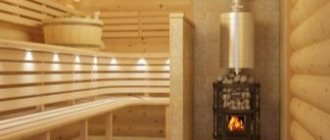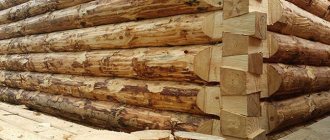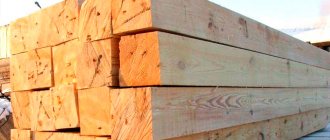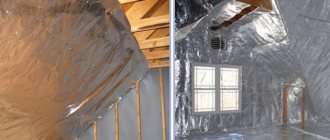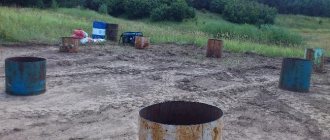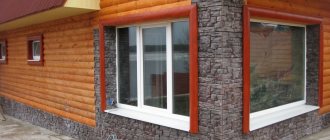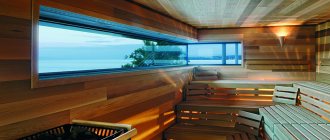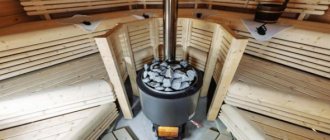Until recently, an asbestos chimney pipe was considered the best option for arranging heating boilers in a house, bathhouse and other buildings that require heating. The main argument in favor of this decision was that the material is non-flammable, resistant to moisture, and most importantly - inexpensive. These factors contributed to the fact that asbestos chimneys were installed in almost every private household. The heads of small utility companies and agricultural organizations did not ignore this simple solution to current problems.
Is a chimney made from an asbestos-cement pipe really such a universal means of removing combustion products? To understand this, it is necessary to dwell on the technology of manufacturing asbestos cement, its advantages and disadvantages, and the possibility of assembling chimneys from asbestos pipes with your own hands.
Cord device
This cord has a core that provides strength and flexibility to the material. It is woven with yarn consisting of fibrous asbestos threads. There are also varieties in which the core is not used.
Different types are also usually distinguished according to the density of twist of the threads. It should be taken into account that the filling can be uniform or lumpy. In the latter case, low thread density alternates with high density (with lumps). The number of turns per unit length determines the bending ability of the cord.
During production, quality control is carried out. If it contains more than 4.5% moisture, the material is rejected. It is unacceptable for the cord core to be exposed.
Sometimes during production the cord is impregnated in order to improve its resistance to high temperatures. Such varieties are more expensive and are practically not used in everyday life. They are used in conditions where the seal is exposed to very high temperatures.
Asbestos simultaneously refers to several substances belonging to the class of silicates. The six types of fibrous stones containing silicon have similar properties. Most of these substances contain sharp needles that can enter the lungs. However, this group of substances releases chrysotile, which is not harmful to health. It also differs in the color of its fibers, which are white. In other varieties (amosite, actenolite, anthophyllite, tremolite, crocidolite) they have a pale gray-green color.
Chrysotile is safe in household conditions. You can only be harmed by prolonged inhalation of air with a high concentration of the mineral. If it enters the body, it is eliminated from it within 2-3 weeks.
Non-flammable cord with a diameter of 10 mm Source vsepechitut.ru
Square asbestos cord Source stroy-podskazka.ru
Asbestos cord is used for two purposes:
- This is a high quality sealing material. It is usually used in conditions of elevated temperature.
- Increasing the level of fire safety of building structures.
Sometimes metal braiding is used to improve performance. Products with a square cross-section are produced. They lack a core, so the product becomes insufficiently flexible and loses its resistance to tearing. This cord is called gland packing.
During manufacturing, they are sometimes impregnated with glue and graphite. This product can withstand more pressure than normal, but is not as resistant to high temperature. It can withstand heat of no more than 300 degrees.
This is what the asbestos cord looks like up close Source stroy-podskazka.ru
Why were they popular in the past?
During Soviet times, there was an acute shortage of all types of building materials. Asbestos pipes were a real boon for private developers. The purlins met all safety standards, had no worthy alternative, and were distinguished by their strength, tightness and affordable price. The links were used in furnace making, arrangement of water supply systems, sewerage systems and construction of wells.
Over time, GOST requirements were replaced by TU. Changes were made to the production technology, which negatively affected the quality characteristics of the products.
Modern products are no longer designed to remove combustion products with temperatures above + 300 ºС.
They can only be used for a gas boiler, installed in the middle and end of the chimneys of saunas and baths. But, it is better to abandon this idea and use pipes made according to specifications for arranging low-pressure communications and protective structures for laying cables.
Pros and cons of the material
When using asbestos cord, the following advantages can be noted:
- This material is fireproof. It can easily withstand heat up to 400 degrees. This cord is resistant to extreme heat and can be used where the operating temperature is high. After heating to 700 degrees, the fibers become brittle. After 1500 degrees they begin to melt.
- The core is made of a very durable material that can withstand significant tensile loads. Due to its multi-fiber structure, the cord can be used as a regular rope if necessary.
- The cord has good abrasion resistance. To make it more durable, it is strengthened by wrapping it with reinforcement.
- The material has water-repellent properties.
- Absorbs sound well.
- The cord does not rot. It is not vulnerable to rodents and insects.
- High resistance to strong changes in moisture and temperature.
- Flexibility allows you to adapt to almost any shape.
Using a cord to insulate a pipe Source forum.katera.ru
Coil of sealing cord Source trivita.ua
Insulation technology
The simplest and cheapest way to insulate an asbestos chimney is to wrap it with roll insulation, for example, basalt wool, and then waterproof it.
It is better to use foamed foil polyethylene, securing it with metal staples or wire.
If you want to know how to insulate an asbestos pipe more efficiently, then the second option is suitable for you. To do this, a casing for the chimney is made of galvanized metal. It should be 5-10 cm larger in diameter than the asbestos-cement product.
The casing elements are joined together without a gap, and the gaps between the pipe and the casing are filled with insulation.
The upper boundary of the gap is carefully filled with cement mortar to protect the insulation from unwanted atmospheric influences.
Various markings
Several types of asbestos cords are used. They can be identified by the markings on them. All varieties listed here can be produced with or without a core. Various types of threads can be used: they can be cleaned or dirty and feathery. In the first case, they will provide a higher level of environmental safety.
The product must contain at least 78% asbestos. Sometimes the core is braided with threads made of viscose or synthetic threads. The additional coating on the outside is completely covered with a layer of asbestos. Cords are available in round or square cross-section.
The characteristics of the cord are regulated by GOST 1779-83. It applies to both sealing and heat-insulating cords.
SHAON
This type includes general purpose asbestos cord. It has found its greatest application in the public utilities sector. It is usually used as a thermal insulation material or as a sealant. Such a cord can have a diameter of 0.7-35 mm. The material is sold in 25 kg bags.
The asbestos sheath is made of monofilament twisted in a special way. This cord can be used in direct contact with steam, gas or water. It can be used provided that the pressure does not exceed 0.1 MPa. General purpose cords come in the following types: twisted, reverse braided, round braided, square braided.
Sealing the door with a cord Source 100kotlov.by
SHAP
Cords of this type are intended primarily for use as thermal insulation where high temperatures are used. Usually we are talking about junctions of heat-conducting routes, through which steam or water, or gas can be transmitted.
In this case, a core is used, which is made from combed fibers from cotton or asbestos threads. Yarn covering is used. For down asbestos cords, the diameter is not considered. The limitation for use is that the pressure in the pipes is too high. If it exceeds 0.1 MPa, then this material is not recommended.
Asbestos cord SHAP Source gomelshina.bel
STEP
This variety is similar to SHAP cords. It has a different purpose. With the help of such cords, hatches in systems designed to supply gas are sealed. It is used for pipes whose pressure does not exceed 0.15 MPa.
Inside the product there are several SHAON twisted together. The metal whip is made of stainless wire.
Asbestos cord for chimney Source soyuzpolimer.com
SHAU
This product can withstand significant mechanical loads and strong thermal heating. Used in the automotive and metallurgical industries. It is used as a sealant. An important feature is that. That such a cord retains its performance characteristics unchanged for a long time. The diameter can be from 15 to 40 mm.
I use asbestos in the bathhouse and don’t listen to anyone, because I know how to use it correctly
My decision to put a layer of asbestos under the stove caused heated discussions among friends. Even Nina looked at me incredulously at first and fought the desire to give a lecture about the dangers of this terrible mineral. I compare horror stories about asbestos to horror stories about GMOs. They are on everyone's mind, but no one knows anything about it. Well, I will dedicate this post to debunking one of the myths that plague humanity.
It so happened that I crossed paths with asbestos from birth. It's simple - I was born in the Ural city of the same name Asbest. It was from this city that the extraction of the material that causes so much controversy today began in Russia. Rumors about how dangerous asbestos is only fueled the curiosity of the boys in our city. Forays for the treasured pieces of the mineral were made regularly - without dire consequences.
Fate turned out to be such that in medical school I again encountered asbestos. This time in the context of studying asbestosis, a disease caused by inhalation of asbestos dust. During practice, our course repeatedly looked inside people. As luck would have it, not a single case of asbestosis presented itself. I went to a pathologist with this question, and he confirmed my guesses. In all the years of practice, no bodies with such a disappointing diagnosis have been reported.
I have heard a lot about the hysteria surrounding asbestos. Every “green” strives to give a lecture about how this material is poisonous. It poses a threat not only to individuals, but to all humanity. I can answer the presented theory only with practice and indisputable facts. Over the years of living in my native Asbest, I have not noticed a high mortality rate due to this ill-fated building material.
I'll make a retreat. There are two types of asbestos: amphibole and chrysotile. The first is mined in Canada and poses a real health hazard. The risks that people are exposed to during “contact” with chrysotile asbestos have not been scientifically proven to this day. But due to its relationship with its dangerous “dangerous” amphibole brother, our asbestos suffers from persecution on a global scale.
Amphibole asbestos fibers enter the lungs and are not excreted for a year or more. Because of this, pathological changes begin in the organs, which can become irreversible. The consequences of inhaling amphibole include lung cancer, stomach cancer and mesothelioma.
Chrysotile asbestos does not have similar properties - it leaves the respiratory system after 2-3 weeks without harm to human health. Harm from inhaling peridot is observed, but for symptoms to appear, you need to constantly breathe over asbestos dust.
To minimize the impact of asbestos, it needs to be securely hidden under the stove, which is what I did. I laid carbon sheets inside the walls, covered them with foil and stainless steel sheets. Of course, some percentage of peridot will end up in the air. But the body can cope with such an amount of substance without difficulty. Even if the particles get into the lungs, they will leave them after a couple of days.
Product packaging
Asbestos cord is sold in the form of a coil or a small reel. The first ones can weigh no more than 60 kg. The latter are not heavier than 5 kg. One package cannot contain more than three segments. Each length is 3 m or more. When selling, coils or reels of cord are placed in paper or plastic bags.
When supplying material, the label must indicate the following:
- An indication that the products were manufactured in accordance with GOST 1779-83.
- Data obtained as a result of physical and mechanical tests.
- The name of the manufacturing company and its trademark must be indicated.
- The name and brand of the cord is indicated.
- The geometric parameters of the asbestos cord and its net weight (excluding packaging) must be listed.
The manufacturer must guarantee storage for 10 years without loss of performance. In this case, the necessary storage conditions must be observed. In particular, these products must be kept indoors.
You can wrap the chimney with foil insulation
Modern material includes two layers: heat insulator and foil. The second one plays a reflective function and can save up to 90% of the thermal energy in the building. Folgoizol is a harmless material compared to other analogues, since the foil is compacted food grade. The material is resistant to ultraviolet radiation and elevated temperatures within the range of -65 to +175 degrees Celsius, a good insulator.
For those who don’t yet know how to insulate a chimney pipe in a sauna, we recommend covering the steam room ceiling, walls and chimney with foil insulation. As a result, you will get a room whose design resembles a thermos. The heat will remain in the sauna, but the bathhouse will quickly gain temperature and then slowly cool down. Sometimes a mesh is installed on the pipe for stones in the bathhouse, which is very convenient and practical.
Where are asbestos cords used?
This material is widely used in various industries. It is a high-quality sealant and heat insulator. Asbestos cord has found application in the following areas:
- SHAU is used for thermal insulation of various furnaces in metallurgical production. It is especially often used for coke ovens.
- STEP is used for systems operating with gas. It is used to make seals for gas generating units. One of the features of this variety is the metal braid of the core.
- TS is used for thermal insulation of pipes. It has high heat resistance. Glass fibers are added to asbestos. Cotton threads are used minimally here.
- In public utilities, hot water pipes can be insulated in this way. If they are tightly wrapped with such a cord, heat loss will be significantly reduced and the service life will increase.
- In the gas system, the tightness of closed hatches must be ensured. Such a cord can provide it.
- In construction, seals are needed in a variety of cases. This is required not only for pipes, but also for doors.
- In everyday life it is used to insulate stoves, barbecues, and chimneys.
- Can be used to seal joints of parts in cars.
The most widely used cords are 10 mm in diameter. Due to its mechanical strength, it can also be used in some cases like a regular rope.
Cord with metal braid Source masterok-remonta.ru
Insulation for a traditional Russian bath
A wooden roof structure may ignite if it comes into contact with a hot pipe. To avoid a fire in the bathhouse, it is isolated. Most often, mineral wool secured with wire is used for this purpose. The top of the pipe is plastered with clay-sand mortar and covered with a layer of galvanized steel roofing. Fix it with self-tapping screws and then perform installation. Insulation helps the roof and wood floors to be protected from overheating and fire . If the pipe is properly insulated and sealed, moisture will not enter the attic.
It is recommended to insulate the pipe outlet in the ceiling and roof area with asbestos sheets. They have good protection against high temperatures. The walls near the inside of the pipe are lined with galvanized metal sheets. Ordinary iron ones are not suitable for such work, as they are susceptible to corrosion. It is advisable to make a box around the pipe where it passes through the ceiling. Expanded clay is poured inside the box, which will serve as good protection against fire for the wooden floor. Expanded clay will also retain heat. Experts recommend that in addition to insulating the chimney, you should also not forget about the ceiling, walls and stove in the bathhouse.
It is recommended that before starting work on insulating a metal chimney pipe, treat its outer part with a heat-resistant sealant . The special sealant can withstand temperatures up to +1000°C. The applied product will prevent insulating materials from sliding on the outer surface of the metal pipe.
How to use asbestos cord for furnace thermal insulation
Work related to the use of the material in question does not require special skills. In order to properly install the seal for a metal stove, care and precision are required.
To do this, do the following:
- It is necessary to clean the oven from dirt, dust, drops of grease and the like. If sealing cord has been previously used, it is necessary to carefully remove its remains.
- If the design provides a special groove for the seal, then heat-resistant adhesive must be applied. If there is no groove, apply glue to the place where it will be laid.
- The cord must be carefully laid out so that it goes exactly where it is planned. The ends must be carefully trimmed so that there is no gap between them when they are placed next to each other.
- You need to press the cord tightly until the glue dries. If the seal was installed only on the door, then it needs to be pressed.
After three or four hours have passed, the glue should dry. In order to check the quality of insulation, you need to heat the stove. When laying the cord, it is important that its size exactly matches the gap.
If you need to insulate a chimney to protect surrounding objects from the sparks that sometimes occur there, it is completely wrapped with a cord. This is done in areas where there is an intersection with walls or ceilings.
It must be wound in several layers. In this case, the thermal insulation layer should extend beyond the walls or ceilings by at least 6-7 cm.
Advantages of using asbestos
Let's start right away with the positive qualities of asbestos pipes, which during the development of agriculture could easily be purchased (or stolen, whichever is preferable to anyone) at many enterprises and collective farms for pennies.
- Their comparative cheapness. This was due to the fact that asbestos was mined in large quantities in our country and products from it are easy to manufacture.
- They are light in weight, so they are quite easy to install.
- They do not have a seam and are not afraid of moisture.
How to choose a cord
When searching for a suitable type of asbestos cord, the following several circumstances must be taken into account:
It is necessary to clarify for what use the material in question is being purchased. The type of heating and its source are taken into account. It is important to choose the appropriate type of cord and its thickness. Too thin will not be able to create a reliable connection, and thick may require replacement of structural elements.
As an example, consider the oven door. A thick thread will require the use of other loops, while a thin thread will allow air to pass through.
If you need to ensure compaction of a cast iron slab, SHAU is suitable. For the chimney it is better to use STEP or SHAON. The use of down cords for domestic purposes is not common.
When selecting a cord, its characteristics matter:
- There should be no signs of damage, tears, bald spots or other similar elements on the surface. In this case, protruding ends of threads no longer than 25 mm are not considered damage.
- The presence of a core makes the cord more durable and elastic.
- You need to take the humidity level into account. The standard allows 4.5%, but for products containing cotton this value should be no more than 3%.
- It is necessary to take into account how much and what kind of asbestos is in the composition. It is permissible to use only the chrysotile variety. The content must be at least 78%.
Making boxes
How to insulate an iron chimney pipe was discussed earlier. Now you can move on to the next step. Many people think that making a chimney box is too difficult a task. In reality this is not the case. It is enough to approach the work responsibly and competently.
Required tools:
- Drill;
- Metal scissors;
- Compass;
- Metal sheets;
- Self-tapping screws.
Stages of work:
- Preparing the hole. Along the edges it is necessary to secure the bars, which will act as a support for the body.
- Two blanks are cut from a metal sheet. They are given a U-shape. Then the finished parts are screwed to the ceiling using self-tapping screws.
- Again, two blanks are made, but they are already secured to standing sheets with a small spade. This results in a seamless frame in the ceiling.
- Now the bottom for the box is made from a metal sheet. There should be a hole for the chimney in the center of the workpiece; a compass will be needed here.
- The box contains four two-centimeter fasteners. They are cut out and bent perpendicular to the bottom.
- Walls are attached to the bottom. Now the chimney is inserted into the box, it is additionally secured with clamps. The voids are filled with an insulating layer.
Protective screens near (around) the stove
Protective screens are insulation panels that cover the side surfaces of the furnace and reduce the intensity of thermal radiation. Screens can be metal or brick. As a rule, they are used for metal furnaces.
Method #1 - metal screens
The most common protective screens are factory-made steel or cast iron sheets. They are installed around the stove, at a distance of 1-5 cm from the walls of the firebox. Depending on the need to insulate one side or another of the furnace, you can purchase side or front (front) screens. Many metal furnaces are initially manufactured with protective screens in the form of a protective casing.
Protective screens make it possible to reduce the temperature of external metal surfaces to 80-100°C and, accordingly, reduce the fireproof distance to 50 cm. The total distance from the firebox to the wall (including a gap of 1-5 cm) will be 51-55 cm.
Installing protective screens is not difficult. Thanks to the presence of legs, metal panels are easily bolted to the floor.
Method #2 - brick screens
A brick screen can cover all the side surfaces of a metal furnace, representing its outer cladding. Then the stove will be in a casing made of brickwork. In another case, a brick screen is a wall separating the stove and the flammable surface.
To lay the protective screen, solid fireclay bricks are used. The binder is cement or clay mortar. It is recommended to use half a brick (thickness 120 mm). But, if there is a lack of material, it is possible to make a wall of a quarter of a brick (60 mm thick), although in this case the thermal insulation properties of the screen will be reduced by half.
Small openings (sometimes with fire doors) are left at the bottom of the shield for air convection between the brick wall and the stove.
The brick walls of the screen must end at least 20 cm above the top surface of the oven. Sometimes the masonry goes all the way to the ceiling.
The brick screen is not installed flush against the walls of the stove, the optimal distance is 5-15 cm. The acceptable distance from the brickwork to the flammable wall is 5-15 cm. Thus, the use of a brick screen allows you to reduce the distance from the stove to the wooden wall to 22-42 cm (stove - ventilation gap 5-15 cm - brick 12 cm - ventilation gap 5-15 cm - wall).
